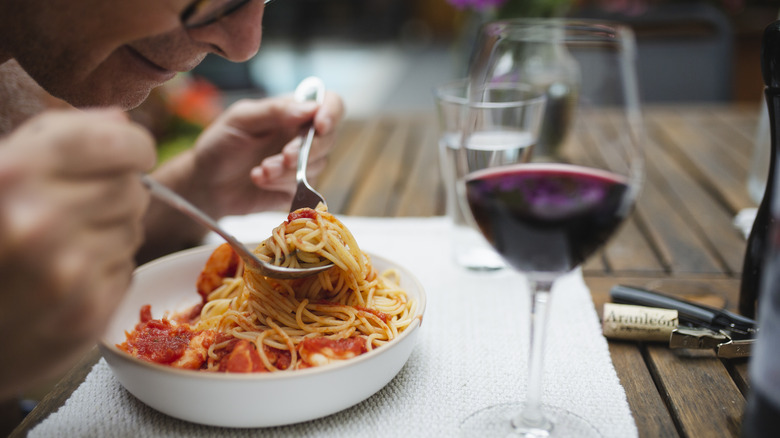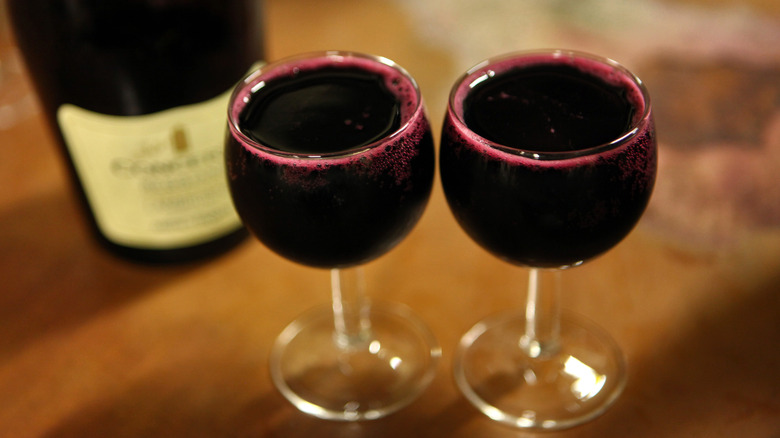A Wine Expert's Favorite Lambruscos To Pair With Tomato Sauce Dishes
Lambrusco is a sparkling red wine, named after the grape used to produce it. Because there are over 60 varieties of the Lambrusco grape — although most Lambrusco wines are made from one of six varieties — various styles of Lambrusco range from very sweet to very dry. As for the flavor profile, most Lambruscos are acidic and fruity, with common notes of cherry, watermelon, and strawberry.
Lambruscos can be paired with a number of dishes — including tomato sauce dishes. To find out the details of this pairing, Tasting Table spoke to an expert: Nathan Grunow, the wine director at Jovanina's Broken Italian in Denver, Colorado. Giving an overview of the state of Lambrusco wines, Grunow says, "Lambrusco, which was once the most popular Italian import, has gone through a recent uptick in quality and depth. Producers working in 'off-dry' or fully dry formats are making fun and energetic wines that occasionally retain just enough bright, purple-fruited sweetness with fresh, popping acidity."
Grunow's first recommendation: a Cleto Chiarli Vigneto Cialdini. He explains, "[It's] a fresh, lightly sweet red that's both light on its feet and a great pair with a lighter red sauce." Perhaps you would pair this with pasta featuring a classic tomato sauce or even a penne alla vodka.
Grunow has different recommendations for heavier tomato sauce dishes
When it comes to heavier tomato sauce dishes — namely, bologneses, such as a rich turkey tomato bolognese — Nathan Grunow suggests a Lambrusco with a bit more depth, such as the 2017 Roccolo Grassi Valpolicella Ripasso. He says, "A combination of Valpolicella's Corvina, Corvinone, Rodinella and Molinaro grapes, vinified with a second pass over spent Amarone, gives this wine part of the darker fruited depth of the more expensive Amarone while retaining the acidic lift found in traditionally minified Valpolicella." For a bolognese pairing, Grunow also suggests a Côtes du Rhône, which hails from France — he describes it as earthy and fruity and a "nice counterpoint to heavier sauces."
If you're looking for a Lambrusco that is versatile enough to pair with just about any tomato sauce dish, then Grunow suggests choosing one that comes from a cooler climate. Some wines are produced in warm climates (such as California, Argentina, or Southern Italy), while others are produced in cooler climates (such as Northern France, Chile, or Washington State) — where wine is produced affects its resulting taste. Cooler climate wines, for example, are more acidic and often tart because the colder weather prevents the grapes from fully ripening. Grunow says, "The muted ripening preserves acidity and freshness, which usually leads to wines that make for good complements to red and tomato sauces of all kinds."

